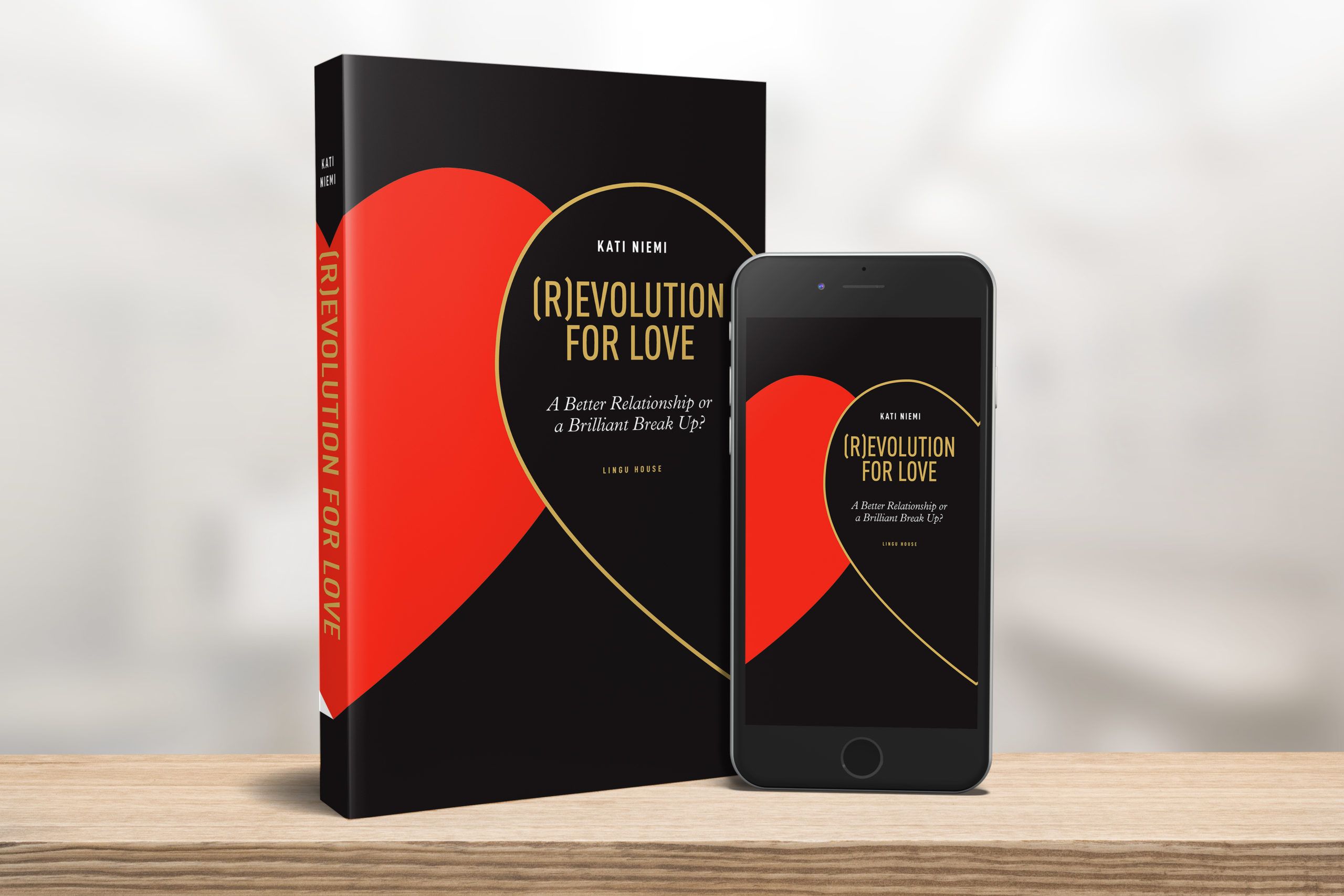We live in a fast-paced world where maintaining one’s health has become a great ordeal. We must learn how to manage and cope with stress from taking a toll on our health. Hormonal balance is the key to stress management and healthy life. Over the years, research has proven that regular physical exercise is effective for dealing with stress and maintaining hormonal equilibrium. But what kind of physical exercise is best for stress relief?
This evidence-based article will examine the relationship between hormonal equilibrium (cortisol, adenosine, insulin, endorphins) and aerobic exercises of different durations and methods (walking, jogging, cycling, swimming,…), weight training, and shorter high-intensity training (HIIT).
In addition to benefiting from mental training, mindshifting, coaching, and hypnotherapy, you can become emotionally resilient when you follow a well-rounded physical exercise regimen (and good nutrition, of course).
So, let’s understand the effect of exercise on the different hormones in your body.
Influence of Physical Exercise on Cortisol Levels
When the body experiences stress, it produces cortisol, the stress hormone. Regular physical exercise can help regulate cortisol levels, improving mental health and reducing stress.
The level of the stress hormone cortisol in your body keeps changing daily, even when you don’t exercise. And physical exercise impacts the cortisol level again, but that’s just normal. The key point is to know which kind of sports balance your cortisol levels the best in the long run.

How to improve your wellbeing through self-development?
Science has revealed: some adults are not mentally sufficiently developed. How to improve your wellbeing through self-development?
If you want to lower your cortisol, should you focus on short and intense workouts or start training for a marathon?
And is aerobic training better than weight training for balancing stress hormone levels?
You will get the answers in this scientific article.
Which aerobic exercise is best for lowering the levels of stress hormone cortisol?
In a recent study, unlike inactive people, aerobic exercisers demonstrated a lower cortisol response to stress (Hill et al., 2008, citation # 1). This was in contrast to people who did not engage in any physical activity. Researchers concluded that aerobic exercise helps reduce stress and improve physical health.
The stress hormone cortisol levels decrease when you walk, jog, swim, or cycle. For optimum results, engage in moderate-intensity activities (e.g. jogging instead of fast running) for a duration of some 30 minutes, three to five times a week.
What kind of exercise should you avoid if your primary goal is to improve your stress management? Read below!
Resistance training and cortisol
Two types of resistance training have been proven beneficial in reducing cortisol levels. These include lifting weights or doing bodyweight exercises.
Kraemer et al.’s (2004) study is a great example of how cortisol levels lower in response to resistance training such as weightlifting. The positive feelings you may have after training are associated with the release of endorphins, the feel-good hormones, which will be discussed later in this article.
Does intense HIIT training increase or decrease cortisol levels in the short term and long term?
HIIT training can temporarily increase cortisol levels during and immediately after the workout. Intense exercise, including HIIT, activates the body’s stress response, leading to cortisol release. Cortisol is a hormone that helps mobilize energy and manage stress.

Online Coaching
Happy to help you! Welcome to book your online coaching session with the certified Coach, NLP Trainer, and Clinical Hypnotherapist Kati Niemi! Please select your
During a high-intensity workout, the body perceives the physical stress and responds by releasing cortisol to support the energy demands of the exercise. This cortisol release is a natural and normal response to physical stressors. After the workout, cortisol levels usually return to baseline as the body recovers.
While HIIT training can cause a transient increase in cortisol levels, it’s important to note that this increase is typically short-lived and within a healthy range. This acute cortisol response to exercise is considered a normal physiological adaptation.
Over the long term, regular HIIT training can positively affect cortisol regulation.
Exercise, including HIIT, has been proven to improve the body’s ability to handle stress by enhancing the stress response system’s efficiency. This can lead to better cortisol regulation, reduced stress levels, and improved overall well-being.
It’s worth noting that the impact of HIIT on cortisol levels can vary among individuals. Factors such as fitness level, exercise intensity, duration, frequency, and overall health can influence the cortisol response to exercise. Individual stress levels and recovery capacity also affect how the body responds to exercise-induced cortisol release.

Why does our conscious mind question the power of the unconscious mind?
Is the power of the unconscious mind fake news and is trying to harness it to achieve our full potential a waste of time? What do we mean by the unconscious mind?
Maintaining a balanced exercise routine, including appropriate recovery periods, proper nutrition, and stress management strategies, is vital for optimizing cortisol levels and overall health. Consulting with a healthcare professional or a qualified fitness trainer can help tailor an exercise program that suits your specific needs and goals.
Physical Exercises to Avoid for Cortisol Balance
It’s important to note that managing cortisol levels involves a holistic approach. Other factors, such as sufficient sleep, a balanced diet, stress management techniques (e.g., meditation or deep breathing), and maintaining a healthy lifestyle overall, also play a crucial role in cortisol regulation. Read more about these below in the article.
When your primary goal currently is optimal stress management, avoid these:
-
- Prolonged Endurance Exercises: Long-distance running, marathon preparation, and other forms of endurance exercise should be avoided, as should sustained periods of high-intensity training. These actions can increase the stress hormone cortisol and compromise their management.
-
- Overtraining: Avoid excessive exercise and overtraining, which can lead to chronically elevated cortisol levels. Listening to your body’s signals and providing adequate rest and recovery between workouts is essential.
Physical exercise influences adenosine levels, improving the sleep-wake cycle, mood, and cognition.
Adenosine regulation is a complex process influenced by various factors in the body. Regular physical activity can help regulate adenosine levels and promote overall well-being through improved sleep, relaxation, metabolism, and other benefits of healthy adenosine functions.
During physical exercise, adenosine plays a multifaceted role in the body, contributing to various physiological responses and adaptations:
Energy Production:
-
- Adenosine triphosphate (ATP) is the primary energy source for muscle contraction during exercise. As muscles work, ATP is broken down into adenosine diphosphate (ADP) and inorganic phosphate (Pi), releasing energy. Adenosine is involved in the replenishment of ATP through various metabolic pathways, such as oxidative phosphorylation and glycolysis, ensuring a continuous supply of energy.
Regulation of Oxygen and Nutrient Availability:
-
- As energy demands increase during physical exercise, there is an accumulation of metabolic byproducts, such as adenosine diphosphate (ADP), in the muscle cells. ADP can be converted to adenosine. The increased levels of adenosine trigger vasodilation (widening of blood vessels), facilitating enhanced blood flow, which improves metabolic waste removal and oxygen and nutrient delivery to meet the increased demands of the exercising muscles. Adenosine promotes vasodilation by binding to adenosine receptors on the smooth muscle cells of blood vessels.
Regulation of Heart Rate:
-
- Adenosine influences heart rate regulation during physical exercise. When adenosine binds to its receptors in the heart, it inhibits the release of norepinephrine, a neurotransmitter that increases heart rate. This adenosine-mediated inhibition helps regulate heart rate and prevent excessive heart rate increases.
Fatigue Regulation:
-
- Adenosine accumulation in the brain is associated with the development of exercise-induced fatigue. Adenosine acts as a neuromodulator and influences neurotransmission in the central nervous system. As exercise intensity and duration increase, adenosine levels in the brain rise, contributing to fatigue and exhaustion. Caffeine is often used to boost physical performance as it blocks the adenosine receptors.
Better Sleep:
-
- Engaging in moderate-to-vigorous physical activity promotes the production of adenosine, regulating the sleep-wake cycle. Physical exercise can increase the body’s sleep drive (sleep pressure). Normal adenosine levels help you keep a good circadian rhythm, further improving your energy levels, healthy metabolism, performance, cognition, stress management, hormonal balance, and overall well-being.
Balancing Insulin Levels through Physical Exercise
Insulin, as you may already know, is responsible for regulating blood sugar levels. Research has shown that physical exercise plays a significant role in regulating insulin levels. Healthy regulation of insulin levels maintains insulin sensitivity and stabilizes blood sugar levels, thus preventing conditions like diabetes and metabolic syndrome.
How about aerobic exercise and insulin? Recent research has revealed that aerobic exercise increases insulin sensitivity in healthy people as well as those with insulin resistance. A meta-analysis conducted by Church et al. (2016, citation #3) suggested that exercises like brisk walking, jogging, and dancing improve blood sugar control and help maintain a healthy physique.
How does High-Intensity Interval Training (HIIT) affect insulin then?
High-intensity interval training (HIIT) has gained immense popularity over the last few years. HIIT stabilizes blood sugar levels and is both time and energy efficient. HIIT is characterized by brief bursts of intense exercise followed by rest periods.

FREE AUDIOBOOK: Audible, Google Play and other stores’ free trial
Audiobook lovers benefit from FREE trial periods of book stores. Enjoy (R)evolution for Love on Amazon Audible, Google Play & other stores
In a study involving young people enjoying good health, researchers observed that a single bout of high-intensity interval training (HIIT) lasting only two weeks considerably improves insulin sensitivity (Babraj et al., 2009, citation #4). Therefore, HIIT is a valuable tool for improving your metabolic health.
For healthy hormonal balance, you can incorporate short bursts of intense exercise and brief recovery periods in your HIIT training. For example, perform exercises like sprinting, weightlifting, or cycling at high resistance at maximum effort for 20-30 seconds, followed by 10-15 seconds of rest. Repeat this cycle for 10-20 minutes, 2-3 times weekly.
Stretching and Relaxation Exercises for Stress Management
In addition to aerobic exercise and high-intensity training, stretching, yoga, and relaxation exercises can be highly beneficial for your hormonal health. Let’s look at how yoga and meditation contribute to stress relief and emotional resilience.
Yoga and Stress Hormones
For centuries, people have relied on yoga to achieve a healthier body and a balanced life. Studies have demonstrated that different exercise combinations and breathing patterns reduce cortisol levels and stress. In a research study by Li et al. (2018, citation #5), it was found that regular yoga practice led to a significant reduction in reported stress levels. Lab investigations also showed a decrease in the level of cortisol. People interested in promoting a sense of peace and improving their overall well-being may find yoga helpful.
Mindfulness-Based Practices
Meditation is a centuries-old method of coping with everyday stress. Recent scientific studies have provided evidence that supports the positive benefits of mindfulness-based practices, such as meditation and related mindshifting methods. Not only do these practices improve hormonal balance, but they also reduce anxiety and stress.
A study by Creswell et al. (2014, citation #6) suggests that practicing mindfulness meditation leads to decreased cortisol levels in the body. The study participants also experienced a reduced sensation of being stressed. By incorporating mindfulness activities into your day-to-day routine, you can enable yourself to better cope with stress and promote your hormonal health.
The Role of Exercise in Promoting Emotional Well-being through endorphins
Besides cortisol and insulin regulation, physical exercise influences other hormones responsible for emotional stability and relaxation. Endorphins are one such category of hormones. You may have heard of them as the “feel-good” hormones. Your body produces these hormones naturally. They are associated with sensations of pleasure and pain.
Scientific evidence shows that engaging in exercise, especially aerobic activities such as cycling and swimming, and high-intensity workouts such as weightlifting stimulates the release of endorphins (Zschucke et al., 2013, citation #7). This surge of endorphins contributes to a sense of euphoria and improved mood and helps relieve anxiety and stress. Doctors and therapists often recommend their patients dedicate some time to endorphin-releasing activities as they alleviate stress and contribute to emotional stability.
Enhancing Sleep Quality through Exercise
In addition to all the benefits listed above, physical exercise impacts the hormones regulating the sleep cycle. For example, melatonin is vital for regulating sleep patterns by influencing the sleep-wake cycle. Restful sleep is an excellent remedy for high-stress levels. Recent studies suggest regular exercise can increase melatonin levels and help improve sleep quality (Youngstedt, 2019, citation #8).

“FIVE STARS!” Book reviews: (R)evolution for Love (Amazon Books)
“Five Stars!” Editorial reviews and reader reviews of (R)evolution for Love – A Better Relationship or a Brilliant Break Up? Amazon books
Engaging in aerobic activity of moderate intensity (e.g., brisk walking, cycling) is particularly helpful in increasing melatonin production and improving both the length of time spent sleeping and the quality of sleep. I encourage my clients to incorporate physical activity into their routines as a natural and non-pharmacological approach to sleep management (in addition to hypnosis) by highlighting the connection between exercise and improved sleep.
This all-encompassing method of stress management, which includes physical activity and attempts to get a better night’s sleep, has the potential to impact an individual’s emotional fortitude and general health significantly.
While regular exercise has been shown to improve hormone balance and help with stress, it is essential to proceed with caution and consider each person’s unique circumstances.
Anyone with preexisting conditions or unfamiliar with physical activity should see a doctor or at least a professional personal trainer or physiotherapist before beginning an exercise regimen. To prevent elevated cortisol levels and possible burnout from excessive exercise, it is crucial to tune into the body’s cues and refrain from overexerting or pushing oneself beyond one’s limits.
It is recommended that a varied exercise program be developed to reap the full hormonal health benefits of physical activity. To effectively manage stress and restore hormonal balance, it is recommended to perform various exercises, including aerobics, weight training, stretching, and relaxation techniques. Regular exercise is the most critical factor in obtaining long-term advantages. Thus this should be the focus rather than the intensity.

FREE EBOOK ‘I love you but…’ – To Break Up or Not to Break Up?
Refocus your energy now to improve your love life! This FREE ebook ‘I love you but…’ will help you move towards a better relationship or
Moderate-intensity aerobic activities like walking better serve people with elevated cortisol levels than short high-intensity interval training sessions (HIIT). Multiple studies found aerobic exercise to lower cortisol levels and alleviate stress. Some well-known research that backs up this assertion is a study that evaluated the levels of the stress hormone cortisol before and after participants engaged in an exercise of varying intensities. The study participants’ cortisol levels dropped significantly after moderate activity, whereas high-intensity exercise had no effect (citation#9).
Finding enjoyable and suitable activities is essential for maintaining a regular fitness program.
Participating in pleasurable workouts boosts motivation and outlook. According to the thorough examination of individual cortisol responses to exercise (research by Stults-Kolehmainen and Bartholomew in 2012), the significance of individual variances and exercise inclinations was underscored, with a focus on the notion that engaging in activities that individuals find enjoyable is more likely to yield favorable psychological and physiological consequences. So: to bring you the best long-lasting results in hormonal balance and physical well-being, simply exercise how YOU prefer! 🙂
And to avoid overtraining and maintain hormonal equilibrium, paying attention to the body’s demand for rest and recovery is crucial.
To improve your hormonal levels – which is better: short HIIT training or long walks?
Any physical exercise has long been associated with many health benefits.
Both short, intensive HIIT (High-Intensity Interval Training) sessions and long walks can positively affect your hormonal balance. Still, the specific impact can vary based on individual factors and preferences. Let’s explore the benefits of each approach.
Short and intensive HIIT workouts typically involve short bursts of intense exercise followed by brief recovery periods. Research suggests that HIIT can be an effective way to reduce cortisol levels and improve overall well-being. Intense exercise releases endorphins (read more below), which can help alleviate stress and improve mood. Additionally, HIIT workouts can enhance cardiovascular fitness, increase metabolism, and promote fat loss – which also improves your insulin levels.
Also long walks can contribute to reducing cortisol levels and promoting relaxation. Walking is a low-impact exercise that can be easily incorporated into daily routines. It stimulates the release of endorphins and helps improve blood circulation, which aids in stress reduction. Moreover, spending time outdoors during walks can benefit mental health.
The choice between short and intensive HIIT training and long walks depends on several factors:
-
- Time availability: HIIT sessions are typically shorter (ranging from a few minutes to around 30 minutes), making them a viable option for individuals with limited time. On the other hand, long walks may require more time investment.
-
- Physical fitness and preferences: HIIT training can be demanding, requiring a certain level of fitness and endurance. HIIT may be a suitable choice if you enjoy high-intensity workouts and are physically capable. However, walking could be a better option if you prefer a lower-intensity exercise that is gentler on the joints.
-
- Individual response: People respond differently to various exercise modalities. While both HIIT and walking can improve your hormonal balance and help you relieve stress, one approach works better for you regarding stress reduction and overall well-being. Experimentation and paying attention to your body’s response can help determine which method yields the most significant benefits for you.
Harness the power of exercise to improve your hormonal health, cope with stress more constructively, and strengthen your body and mind!
Regular physical activity, such as aerobic and strength training, stretching, and relaxation techniques, can significantly aid stress management and hormonal balance.
Resistance training improves stress response and mental health (and more muscles can help you balance your insulin and other hormonal levels), while aerobic exercise helps reduce cortisol levels and also improve your well-being in many ways.
High-intensity interval training (HIIT) can also control your insulin levels and, in the long term, also improve your cortisol levels despite the immediate cortisol spikes during the intense training. Incorporating mindfulness-based practices, yoga, and stretches can help with stress and hormone regulation.
By combining these research-backed suggestions with the various mindshifting methods, we at the (R)evolution for Love can help you make very beneficial lifestyle changes (sleep, nutrition, exercise, stress management, relaxation…), and for example, engage in those physical activities that improve your mental health, lower your stress hormone levels, and build emotional resilience.
Happy to hear from you!
With Love
Your Coach Kati
Clinical Hypnotherapist, NLP Trainer, MSc., Author, Blogger
[email protected]

“FIVE STARS!” Book reviews: (R)evolution for Love (Amazon Books)
“Five Stars!” Editorial reviews and reader reviews of (R)evolution for Love – A Better Relationship or a Brilliant Break Up? Amazon books

FEEDBACK TO LOVE! Reader reviews (Book+Blog)
RELATIONSHIP GUIDE: BOOK REVIEWS – We are blown over by the feedback the (R)evolution for Love relationship blog and guide have received. WOW!

FREE AUDIOBOOK: Audible, Google Play and other stores’ free trial
Audiobook lovers benefit from FREE trial periods of book stores. Enjoy (R)evolution for Love on Amazon Audible, Google Play & other stores

FREE EBOOK ‘I love you but…’ – To Break Up or Not to Break Up?
Refocus your energy now to improve your love life! This FREE ebook ‘I love you but…’ will help you move towards a better relationship or

How to improve your wellbeing through self-development?
Science has revealed: some adults are not mentally sufficiently developed. How to improve your wellbeing through self-development?

Why does our conscious mind question the power of the unconscious mind?
Is the power of the unconscious mind fake news and is trying to harness it to achieve our full potential a waste of time? What do we mean by the unconscious mind?

INFIDELITY and the collected excuses: The good reasons for cheating
CHEATING: What is a good reason to cheat? What do the cheated partner, “the other woman/man” or the cheater choose to believe in?

What is an open relationship? Does it lead to breaking up?
What is an open relationship? Who are non-monogamous open relationships for? Is your partner suggesting consensual non-monogamy?

Narcissism in a Relationship: “How to Know if My Partner Is a Narcissist?”
What are the signs and causes of narcissism? Can you make a relationship with a narcissist work? Can you heal a narcissistic partner?

Aromatherapy for Libido & Romance – The Best Essential Oils for Love
Sense of smell influences our sexual desire and performance. Aromatherapy tips and the best essential oils for romance, libido, sex and love.

When positive thinking becomes toxic
What is too positive thinking like? Where should we focus the power of our mind and our willpower?

TO BREAK UP OR NOT TO BREAK UP? Should I stay or should I go?
How do you know if you should leave or not. How to make the decision to break up or to improve your relationship? To break up or not?


























